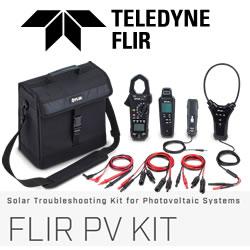Due to inconsistent installation practices, intense manufacturer competition, and sometimes conflicting motives between Operations and Maintenance (O&M) providers and end-owners, the risk of fires looming on rooftop installations is uncomfortably common.
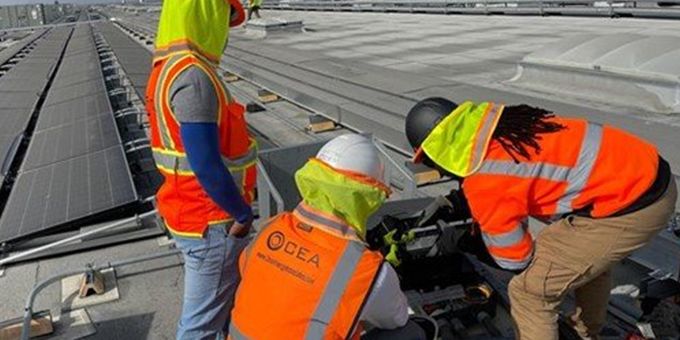 Rooftop Solar’s Unspoken Truth: Fires and Safety Risks are Uncomfortably Common
Rooftop Solar’s Unspoken Truth: Fires and Safety Risks are Uncomfortably Common

Glenn Shellenberger | Clean Energy Associates (CEA)
Whether you’re a homeowner looking to cut back on your electricity bill or a corporation seeking ways to reduce your carbon footprint, it’s likely that you have looked into or have already installed rooftop solar. And you wouldn’t be alone. “The global rooftop solar market size was valued at $62.4 billion in 2019 and is projected to progress at a compound annual growth rate (CAGR) of 6.9% from 2020 to 2025.”
The benefits of rooftop solar are enormous. With PV prices low enough to compete with grid prices, impacts from climate change on the rise, the energy and carbon savings easily calculated, and your rooftop likely unused real estate, there has never been a better time to incorporate solar on your home or business rooftop.
However, due to inconsistent installation practices, intense manufacturer competition, and sometimes conflicting motives between Operations and Maintenance (O&M) providers and end-owners, the risk of fires looming on rooftop installations is uncomfortably common. Based on a sample of hundreds of commercial scale rooftop inspections performed by Clean Energy Associates (CEA) globally, over 90% of inspected rooftops had significant safety and fire risks.
One need only perform a simple Google search to find examples of these risks turning into actual fires and causing costly damage, business disruptions, store closures, data center interruptions, etc. Thankfully, despite the prevalence of the risks, the causes, identification, and the remediation and resolution are surprisingly straightforward.
Three Most Common Fire Risks on Rooftop Solar Installations
Let’s start with the causes. The three most common gating issues (that is, issues that pose a potentially immediate fire risk) include:
-
Wires on sharp edges
-
Poor terminations in inverters / heavy scoring on wires
-
Improperly made or mismatched/crossmated connectors

Figure 1: Wires on sharp edges will degrade faster due to the cables expansion and contraction associated with thermal expansion/contraction and rooftop vibrations. This poses the risk of a ground fault and potential fire if not remediated.
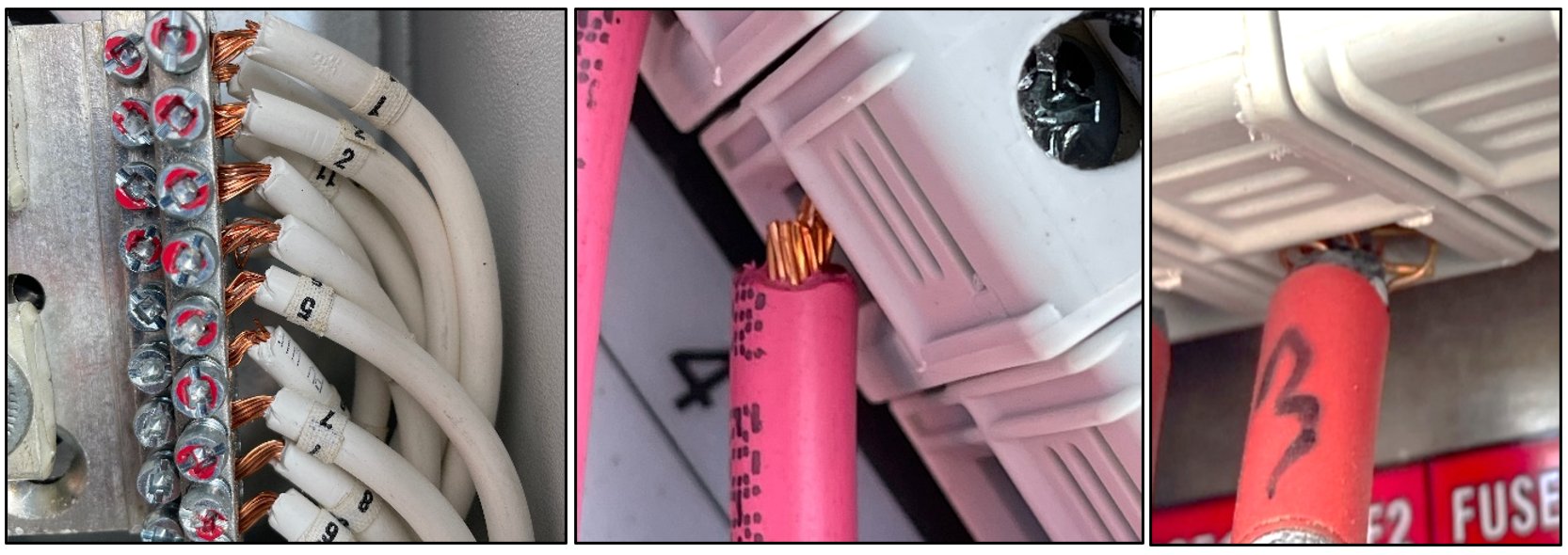
Figure 2: Three examples of improper terminations. Cut strands, scored wire strands from improper wire trimming, and improperly terminated wire terminations. All of these examples require remediation prior to re-energization.
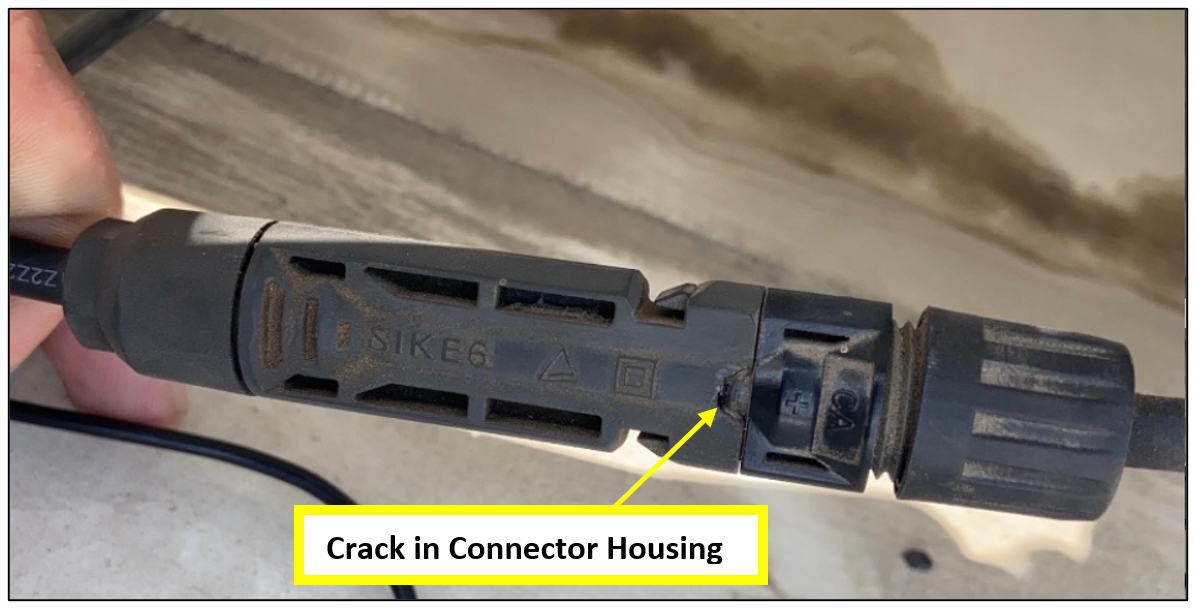
Figure 3: Mismatched and cracked field-made connector
Each of these issues pose potentially immediate fire risks but many can operate fine for years without incident before causing a fire. Thankfully, these ‘ticking time bombs’ can easily be identified by performing an in-depth system-off (de-energized) visual inspection, and typically are also easily fixed.
So how do these relatively trivial issues come about in the first place, and why are they so prevalent across the industry worldwide?
Primary Causes of Rooftop Solar Safety Risks
The answer to this question falls into three categories:
-
Inconsistent and widely varying installation practices
-
Inaccurate or incomplete connector information
-
Conflicting motives between O&Ms and system-owners
Inconsistent Installation Practices
The first issue is fairly straightforward and self-explanatory. Typically, companies will contract out the installation to multiple third-party installation groups. Commercial-grade rooftop solar is still a relatively newer field with solar jobs outpacing the overall job growth rate in the US by 5x over the past decade. Incomplete or inconsistent training is understandably associated with this type of rapid industry expansion and is one of the leading causes of fire risks on commercial rooftops.
Inaccurate Connector Information
The second, and more significant, cause of these fire risks is incomplete and sometimes inaccurate information regarding solar module connectors.
To briefly explain, rooftop solar modules are typically installed in strings of modules connected in series (usually between 18 to 20 modules for commercial/industrial systems) before ultimately being connected to the inverter at the end. The distance from one module to the next on a string is standard, so the module-to-module wire harness connections on the string are factory-made. However, because the distance from the end of the string to the inverter is variable, those connections (module to inverter and inverter to panel board) are typically ‘field-made’ connectors assembled on site during the installation instead of in the factory.
If the field-made connections use different hardware than the module-to-module connectors on the string, or if they are not assembled and installed per the manufacturer’s specifications, there is a significant risk of a hotspot developing, which may lead to a fire. Mismatched or improperly made connectors are a common cause of rooftop solar fires and in some cases account for 100% of an installation’s connectors.
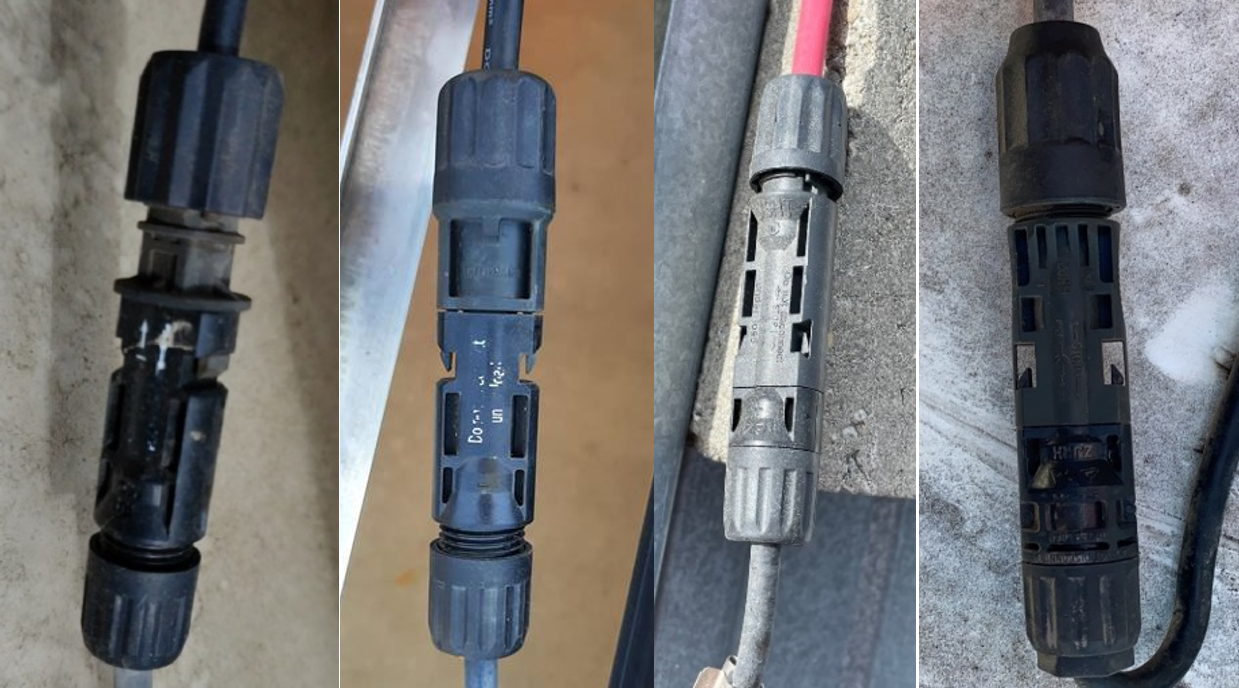
Figure 4: Four examples of various mismatched field made connectors, some having cross threaded or improperly torqued backnuts. All require replacement prior to re-energization.
There’s always a risk of an installer creating field-made connectors without realizing that they're mismatched, but the larger industry issue contributing to improperly made connectors is the inconsistent and inaccurate information from manufacturers regarding which connectors are compatible with each other. It is important to note the update to the National Electrical Code (NEC) on this issue, writing, “Where mating connectors are not of the identical type and brand, they shall be listed and identified for intermateability, as described in the manufacturer’s instructions.” However, the problem of improper field-made connections is likely to persist without proper training.
With the rise of connector manufacturers, companies may list their connector as “X-connector compatible” in their marketing literature without the UL listing or documentation to support the claim. This leads installers to think the mismatched connectors are compatible, when in fact they are not. In terms of seriousness, this is a global issue and the leading cause of fire risks found from our inspectors.
Conflicting Priorities Between Operations & Maintenance Companies and System Owners
The third common cause of these fire risks not being promptly identified and resolved is the complicated nature of agreements between an Operations & Maintenance (O&M) company and a system end-owner. As the agreements are typically written, an O&M is required to fix known issues as well as perform yearly or bi-annual inspections. Again, the inspectors sent to conduct these inspections may have widely varying experience, but more importantly, they may be disincentivized to spend a significant amount of time looking for issues they would ultimately be liable to resolve.
Rather than performing a relatively time-intensive row-by-row inspection that could easily identify issues such as wires on sharp edges, heavy scoring, and mismatched connectors, O&M inspectors may instead opt to run system performance tests and only inspect a sample of the modules.
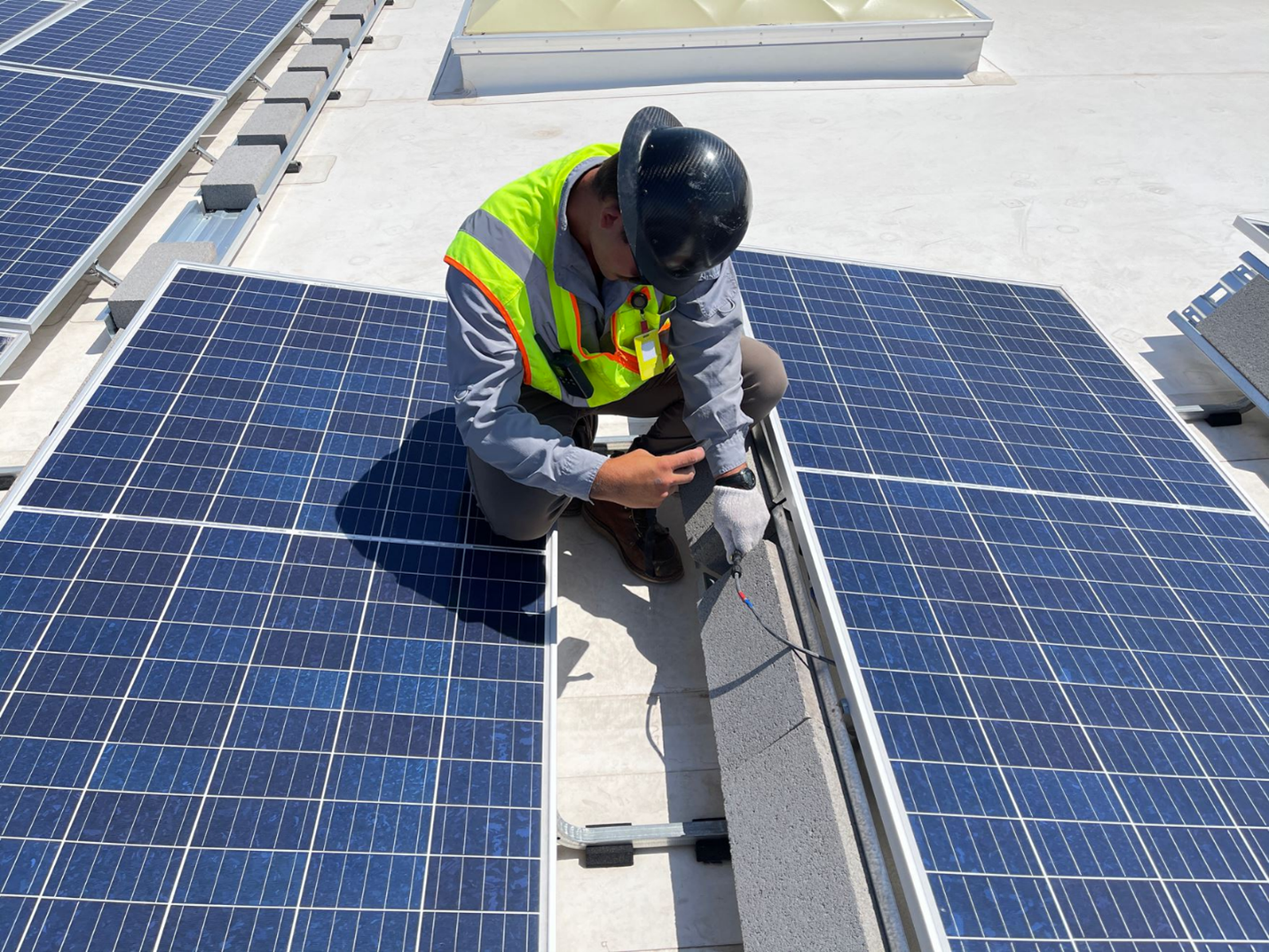
Figure 5: CEA engineer inspecting a rooftop solar installation for thermal irregularities on field made connectors.
How to Identify and Resolve Rooftop Solar Fire Risks
Understanding how we got to this point is important, but site owners need to understand how they can check their current installations for fire risks and resolve them as quickly as possible. The good news is that the identification and resolution of these issues is a relatively simple one.
Step 1: De-Energize a Site
With a group of licensed professionals, follow proper de-energization procedures and ensure the system is in a safe system-off state.
Step 2: Perform an In-Depth Visual Inspection and System-Off Tests
Due to the seriousness and prevalence of these fire risks, qualified inspectors are recommended to perform an in-depth (system off) visual inspection. This inspection should examine things like mismatched or improperly made connectors, wires resting on or hanging near sharp edges, poor terminations at inverters, and heavy wire scoring or improperly landed and torqued terminations
The system-off test should also include DC Insulation Resistance Test (DC IRT) to check the current leakage on the AC cables, and a continuity test to ensure proper component grounding.
Step 3: Perform System-On Inspections
After resolving the safety issues found during the visual inspection and system-off tests and eliminating the safety risks posed by those, re-energize the site and perform system-on thermal imaging of the components (inverters, field made connectors, factory-made connectors, load centers, combiner boxes, central and string inverters, etc.). In all thermal scans look for a change in temperature (ΔT), with a large enough variance from a determined average temperature of other identical components onsite. Lastly, confirm that the inverters are running properly without irregularities or faulting, and the monitoring capabilities are hooked up and running properly.
De-Energize and Inspect Your Site Today to Ensure Safety Risks are Addressed
Today, about “70 percent of commercial buildings in the U.S. — or 600,000 sites — are potential targets for solar projects.” At best, only a few tens of thousands of those commercial rooftops are currently equipped with solar. With rising demand and the expected growth of the rooftop solar industry, the issue of fire and other safety risks is likely to only get worse without remediation, so it is imperative to ensure that your system is installed properly and not operating with risks.
Finding and resolving safety risks on your rooftop solar installations is straight-forward, and performing the due-diligence up-front can save significant costs (real and reputational). If your site has been energized for more than 5 years, there is an increased threat that these issues are present. Having a trained eye from certified installers is the best way to check your rooftop for fire risks.
Check that you are using an installer with a good track-record and put the due diligence into your O&M contract up front to ensure regular and proper maintenance and inspections. Bringing in a third-party to validate the results of your O&M inspectors or provide an unbiased extra level of scrutiny can help ensure safety risks are found and a remediation plan is drawn up to resolve them.
Clean Energy Associates has performed over 8 GW of third-party inspection and engineering services work for some of the largest global EPCs, O&Ms, and corporate solar sites. If you’re concerned about possible safety risks on your installation, reach out to us to perform a due-diligence inspection.
About Glenn Shellenberger
Glenn Shellenberger is project manager and technical sales engineer at Clean Energy Associates.
The content & opinions in this article are the author’s and do not necessarily represent the views of AltEnergyMag
Comments (0)
This post does not have any comments. Be the first to leave a comment below.
Featured Product
